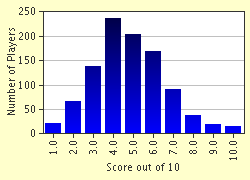Quiz Answer Key and Fun Facts
1. In ancient times scented unguents were produced from floral essences mixed with animal fat. In the 10th century however, an Arab, Ibn Sina, developed a new process of extracting floral attar with steam. Mixed with water, this scent became both a cosmetic and flavouring staple for many centuries. What was this scent called?
2. During the 1400s, looking pale and otherworldly was in. To achieve this, women shaved their foreheads, plucked out their eyelashes and eyebrows, and whitened their faces and bosoms with ceruse. What did ceruse consist of?
3. During the 1400s women sometimes resorted to a more drastic method of achieving that "pale look". What did they do?
4. In what country did nail polish originate?
5. Helena Rubinstein began her career creating stage and film makeup. When Theda Bara appeared on the screen wearing a lot of one of Rubinstein's innovations, it became instantly popular with the general public. What was it?
6. Max Factor, like Rubinstein, was originally from Poland. During the last years of the 19th century he became purveyor of cremes and cosmetics to the Russian court. In 1904 he decided to try his luck in America, where he too started out by creating and selling theatrical makeup. What was one of his first major innovations?
7. Using scents to mask the smell of sweat has always been very common. In what century, however, was the first real deodorant produced?
8. In the early 1920s she got a tan while on a cruise aboard the Duke of Westminster's yacht. When she got home, the colour of her skin caused a fashion revolution. Who was she?
9. In 1960, Yardley was a small British firm that had been producing soaps and perfumes from lavender essence for almost 200 years. By 1966, however, it was a giant in the cosmetic industry, as it produced a complete line of cosmetics and fragrances that proved tremendously popular in Europe and in North America. What was this line called?
10. A beautiful model in an evening gown appeared on the cover of a Harper's Bazaar magazine in 1915. She wasn't wearing a corset, her skirts were above her ankle and the back of the dress was scandalously low. But the model lacked one thing in particular that would set off a new trend in fashion in North America. What was it?
Source: Author
dobrov
This quiz was reviewed by FunTrivia editor
Leau before going online.
Any errors found in FunTrivia content are routinely corrected through our feedback system.


